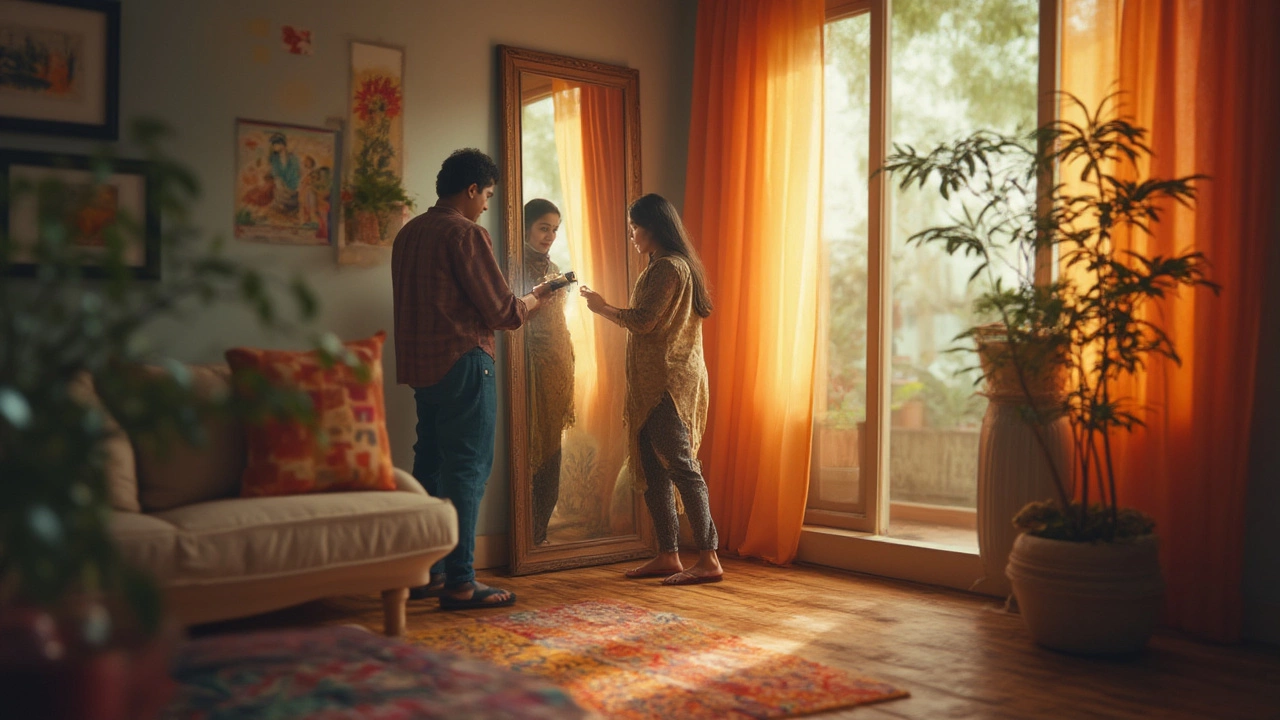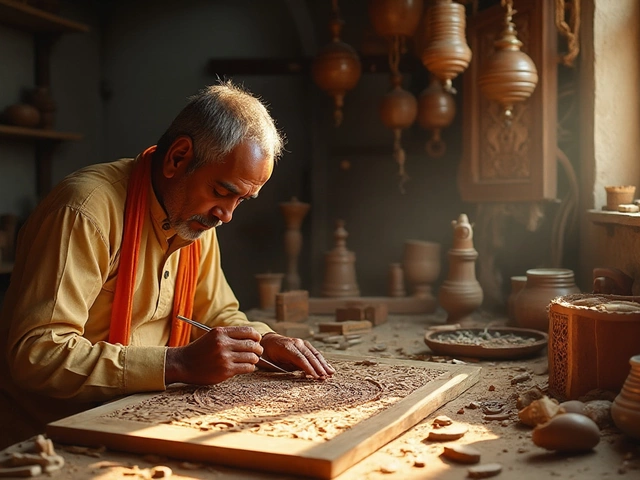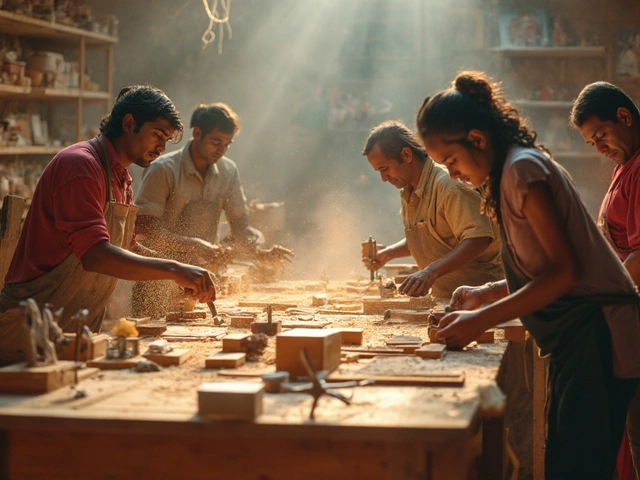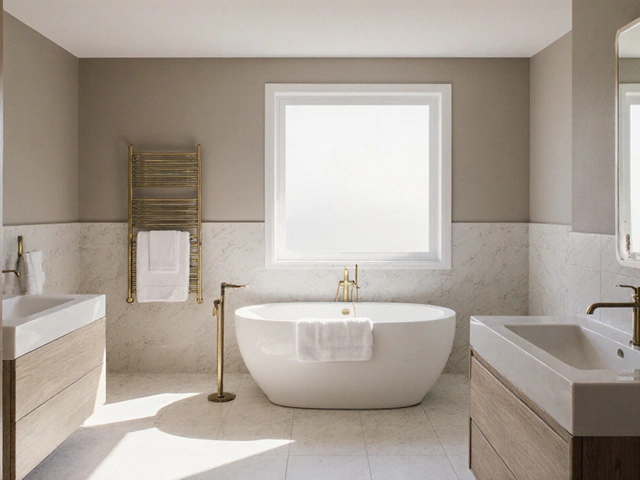
Ever bought a mirror online, only to find that your reflection looks oddly warped or the silver film starts peeling after a few months? Choosing a good quality mirror goes far beyond picking what looks good on a website. There’s science, history, and a few clever tricks behind spotting mirrors that will last years without turning your daily hair checks into a funhouse experience. What actually separates decent mirrors from the duds? Let’s shatter a few myths and get practical about what really makes a mirror ‘high quality’.
The Science Behind a Mirror: What Makes It Good?
Mirrors are more than shiny glass. At their core, most household mirrors are made from a glass panel with a reflective layer—usually silver or aluminum—painted or chemically fused to the back. This silvering process hasn’t changed much since the 1800s. The best mirrors use high-quality, flawless glass, and a thick, even layer of real silver for crisp reflection and long-term durability. The glass’s thickness matters—a too-thin sheet wobbles and warps the reflection. In Canada, the sweet spot is usually 5mm-thick float glass for wall mirrors. Anything thinner, and you risk a funhouse effect, especially with larger pieces.
Why does silver matter? Real silver outperforms aluminum for truer color, more depth, and less distortion. This is why luxury brands (and most mirrors used in museums) use genuine silver. Mass-produced, budget mirrors lean on aluminum or even non-metallic polymers. These can look fine at first, but over time, aluminum oxidizes faster and loses that crisp reflection.
Another secret to clarity: Low-iron glass. Standard glass has impurities—mostly iron—which give it a green tint around the edges and subtly muddy the reflected image. For places like bathrooms where you want shaving or makeup precision, low-iron glass makes a crazy-clear difference. It’s called “ultra-clear” or “optically clear” – ask for it if you want premium results. Some of the sharpest, most true-to-life mirrors actually use glass made in Germany or Japan, but Canadian mirror makers do offer low-iron options if you ask.
Finally, look for the safety rating. Canadian standards (like CAN/CGSB 12.5-M) require wall mirrors to stay intact rather than shatter in dangerous shards. Laminated backing or safety film is key, especially if you have kids or the mirror will hang near busy hallways.
How to Spot a High-Quality Mirror (In Store or Online)
It’s easy to be fooled by a mirror’s frame or clever photography. To spot quality, ignore the fancy border and look at the mirror itself. First, check the reflection. Stand several feet back—does your reflection look crisp and proportional, or stretched and distorted at the edges? If there’s even a slight bend at the rim, the glass is too thin or warped.
Look at the silver layer on the back. If the store lets you see the raw mirror edge, peek behind the frame: Might you spot any cloudiness, scratches, or black dots? These “desilvering” spots show a poor-quality or poorly-sealed silver layer, a common giveaway on cheap imports. A mirror with thick, uniform silvering won’t show these issues, even after years of typical use. Bonus test: Hold up a white piece of paper right against the front of the glass. Is there a visible gap between the paper and its reflection? A big gap means a thick glass substrate (good), but if the reflection is also razor-sharp and color-accurate, you’ve found a premium piece.
Frame construction is another sign. Hefty, solid-wood or metal frames keep large mirrors flat and help protect the glass edge (where cracks always start). Hollow plastic or stapled-together backings? Skip it unless you’re buying disposable room decor.
Labels matter. Some of the best Canadian brands will state the glass thickness, reflectivity percentages (aim for over 90%, the higher the better), silver layer material (silver beats aluminum), and safety certification. If nothing’s stated, start asking questions. Don’t hesitate to tap the glass lightly—thin, low-quality mirrors make a high-pitched, tinny sound, while thick, quality ones sound heavier and duller.
For online buys, reviews are king. Look for buyers mentioning reflection quality, durability, edge finish, and whether their mirror arrived without warping or flaws.

Why Mirror Quality Matters: Practical Impact on Daily Life
This might sound obsessive, but good mirror quality isn’t about luxury. A sharp, undistorted mirror helps you look your best: shaving straight lines, doing makeup that doesn’t look clownish, or just checking if your clothes match in daylight. Warped or tinted mirrors mess with your perception, especially in small spaces, where you rely on a mirror to make the room feel open and bright.
Quality shows itself over time. Cheap mirrors start to degrade quickly, especially in humid spots like bathrooms or kitchens. Ever notice how older mirrors develop black edges or mysterious gray patches? That’s desilvering—the protective backing was too thin, letting in moisture and air until the silver oxidizes away. Quality mirrors come sealed with thick paint or vinyl on the back, keeping them fresh for a decade or more, even with Canadian winters’ wild humidity swings. If your condo’s bathroom mirror survived more than 10 years without blackening, chances are it was a good one.
Mistakes can get costly: Replacing a large, low-quality wall mirror can set you back several hundred dollars (not to mention patching the damage from removal). Worst-case scenario: poorly installed, thin mirrors can crack or shatter from a simple door slam. For renters, make sure your landlord installs only safety-rated glass; insurance rarely covers injuries from non-compliant mirrors.
Decor-wise, mirrors aren’t just tools—they bounce light, amplify art or architecture, and double the impact of your favorite wall. But only a crystal-clear, color-accurate mirror will pull that off. Slight green or yellow tints (from cheap glass) wreck the mood in an instant.
How to Choose, Care for, and Keep Your Mirrors Looking Sharp
So you want a good quality mirror—how do you actually pick one and keep it crisp through Toronto’s dry winters and humid summers?
Choosing the best mirror means focusing on where you’ll hang it. For bathrooms, demand specialty backing designed to resist steam (look for “moisture resistant” or “bath-safe” labels). For entryways, go as thick as possible—5mm glass for large verticals, at minimum. Bedrooms and walk-in closets benefit from low-iron, true-clear glass, especially if you’re checking colors in natural light.
Consider the frame, too. Heavy mirrors should come with robust, professional-quality hangers pre-installed. If there’s any doubt, insist on French cleats or Z-clips—these distribute weight far safer than a few random D-rings. And weight matters. A 5mm glass mirror, especially one over 1m wide, will top 16 kg (about 35 lb) before adding the frame. Make sure your wall studs can handle it.
Want some fast care tips? Here’s what keeps mirrors looking fresh decade after decade:
- Skip ammonia-based window cleaners—they corrode the backing. Instead, mix water and white vinegar in a spray bottle. Wipe with a lint-free microfiber cloth for zero streaks.
- Dry every drop of water after showers—this is when moisture sneaks behind the edge and starts desilvering.
- Never use abrasive pads or scouring brushes.
- If your mirror lives in a humid area, run your bathroom fan for 10-20 minutes post-shower.
- For giant wall mirrors, inspect the mounting hardware every year. Mounts sometimes settle into drywall, especially with temperature swings.
When shopping, remember quality often costs less over time. Cheap, thin mirrors with bare-minimum silvering may sell for under $50, but you’ll replace them within two or three years. A solid, Canadian-made, silver-backed mirror with thick glass will probably cost $150 and up, but could last 20 years if you treat it right.
Here’s a snapshot of what to look for when comparing mirrors at a glance:
| Mirror Type | Glass Thickness (mm) | Reflective Layer | Backing Protection | Typical Lifespan |
|---|---|---|---|---|
| Low-cost mass-market | 3 - 4 | Aluminum | Basic paint | 1-3 years |
| Good standard | 5 | Silver | Thick paint or vinyl | 10-15 years |
| Premium/Low-iron | 5 - 6 | Silver (low-iron glass) | Moisture-sealed | 20+ years |
Next time you step up to a mirror, notice those tiny details—edge clarity, reflection sharpness, even the weight in your hands. A high-quality mirror isn’t just a piece of glass. It might just be the most important ‘window’ in your house that doesn’t actually face outside.




